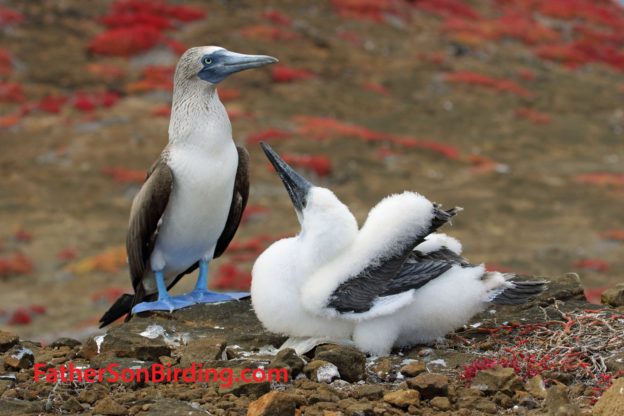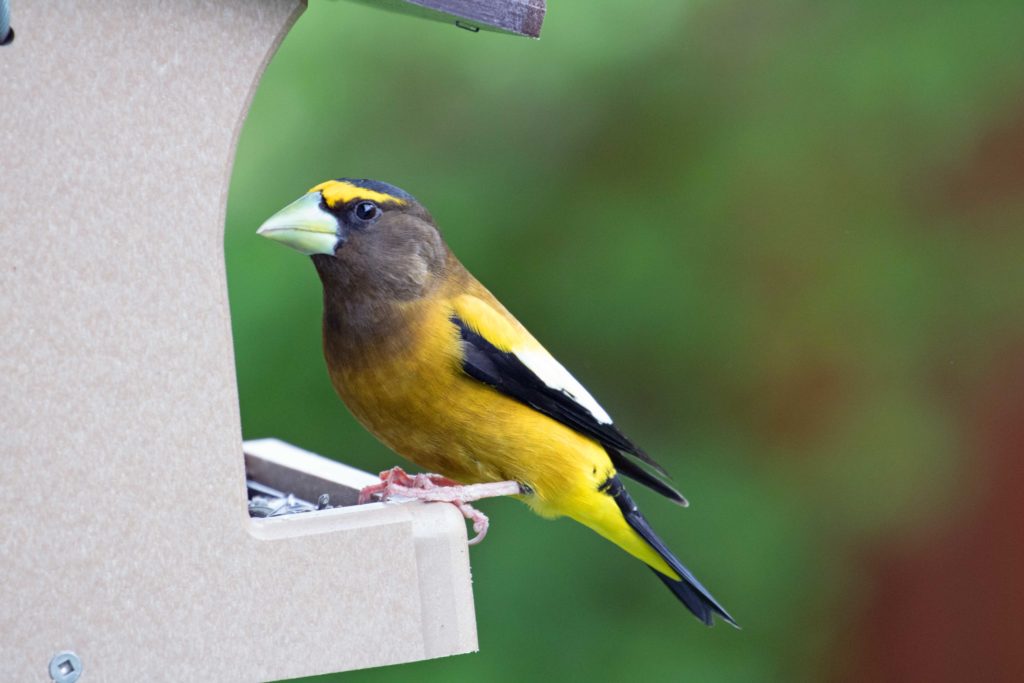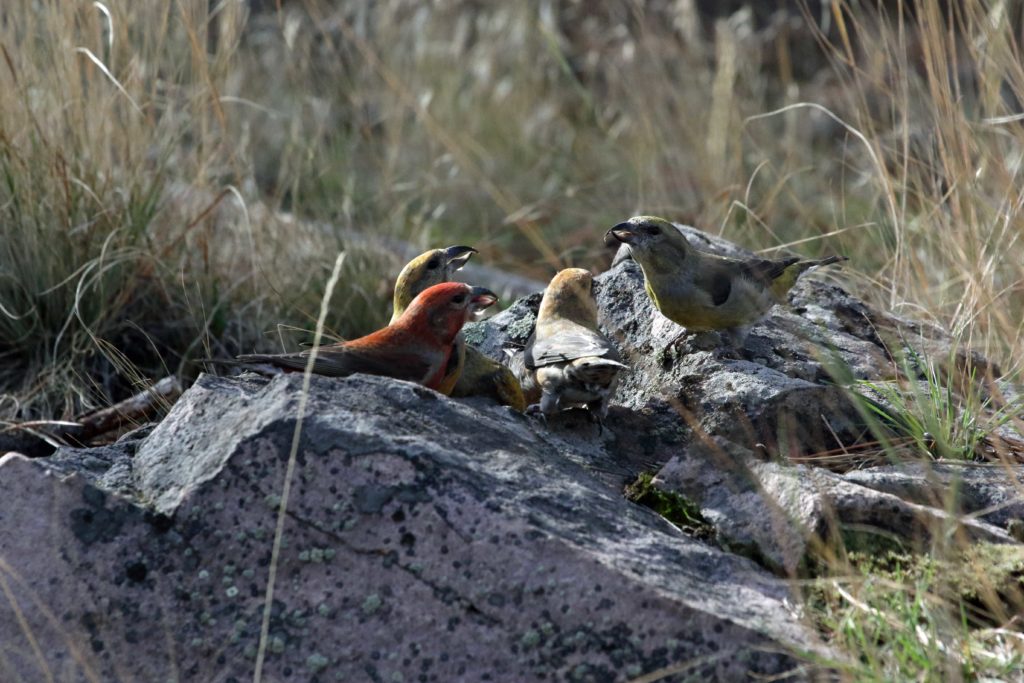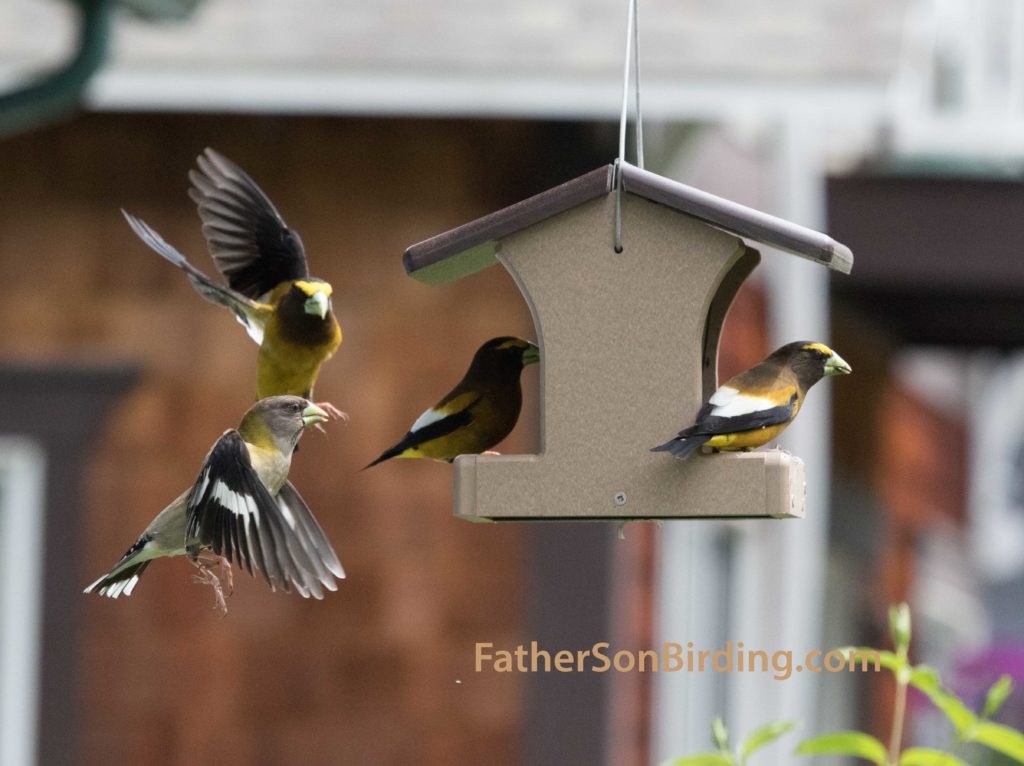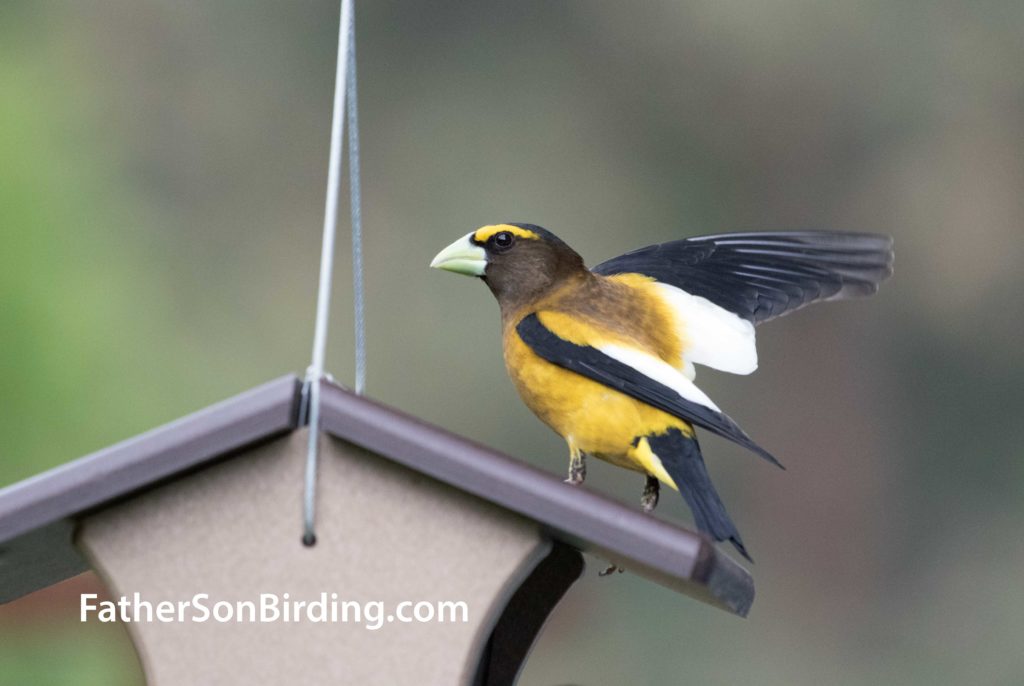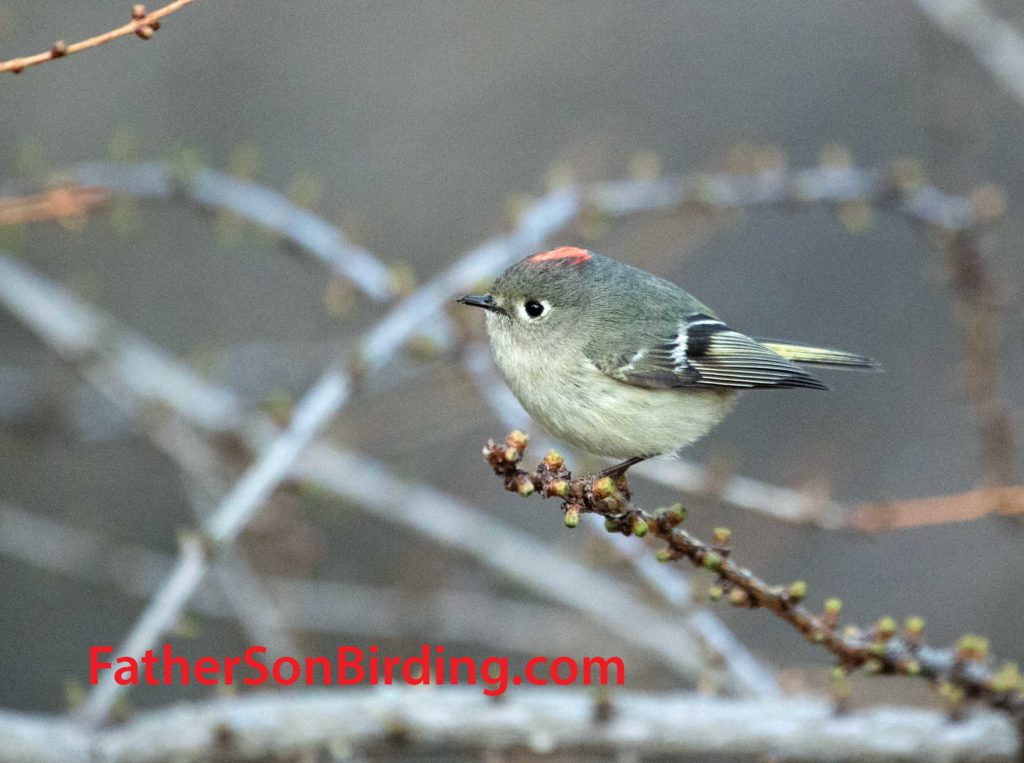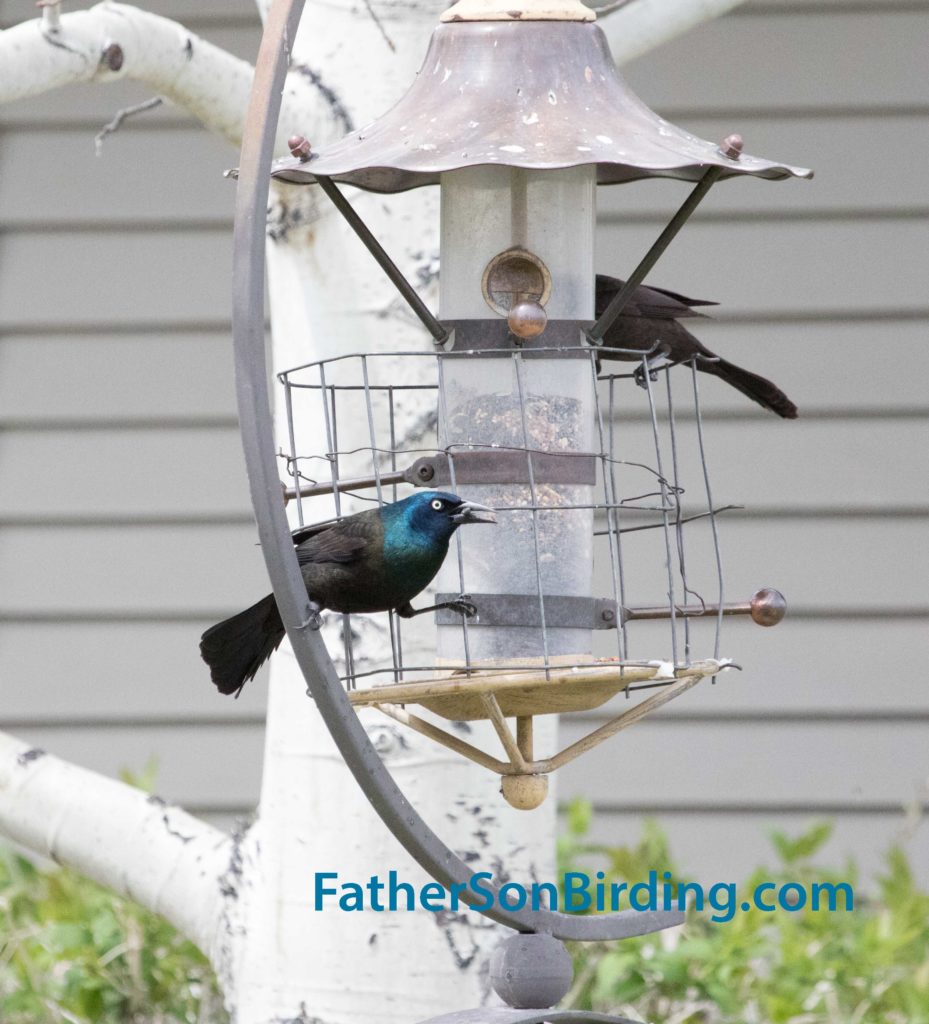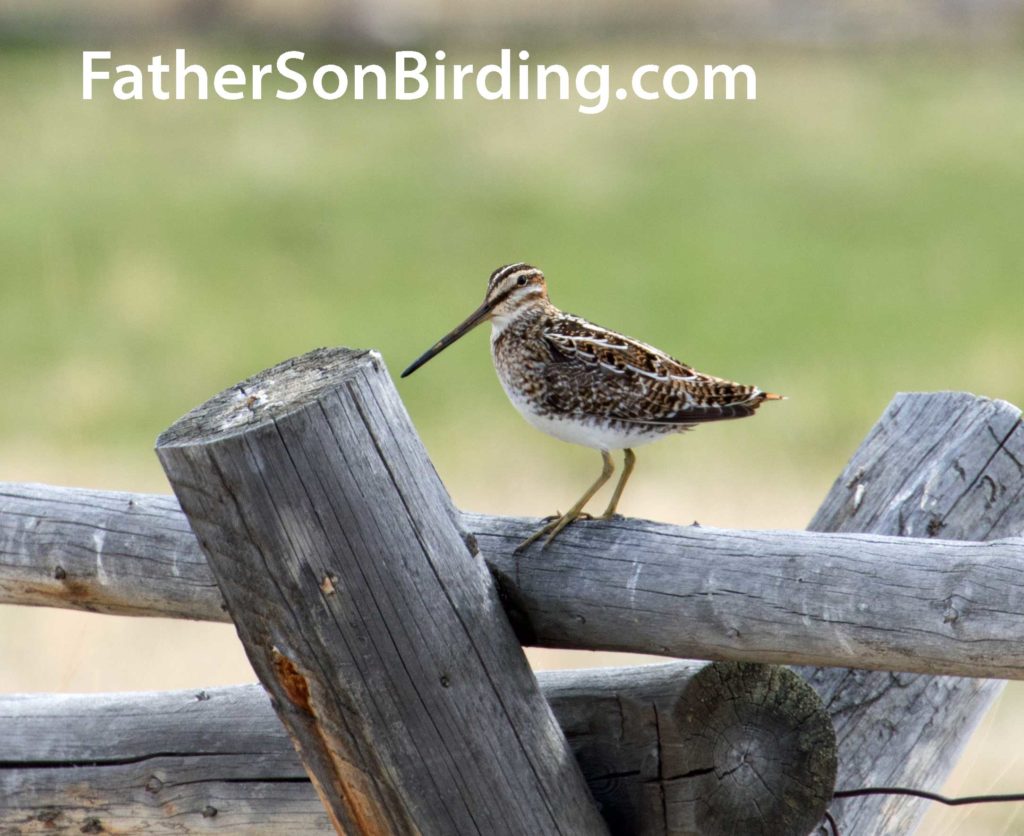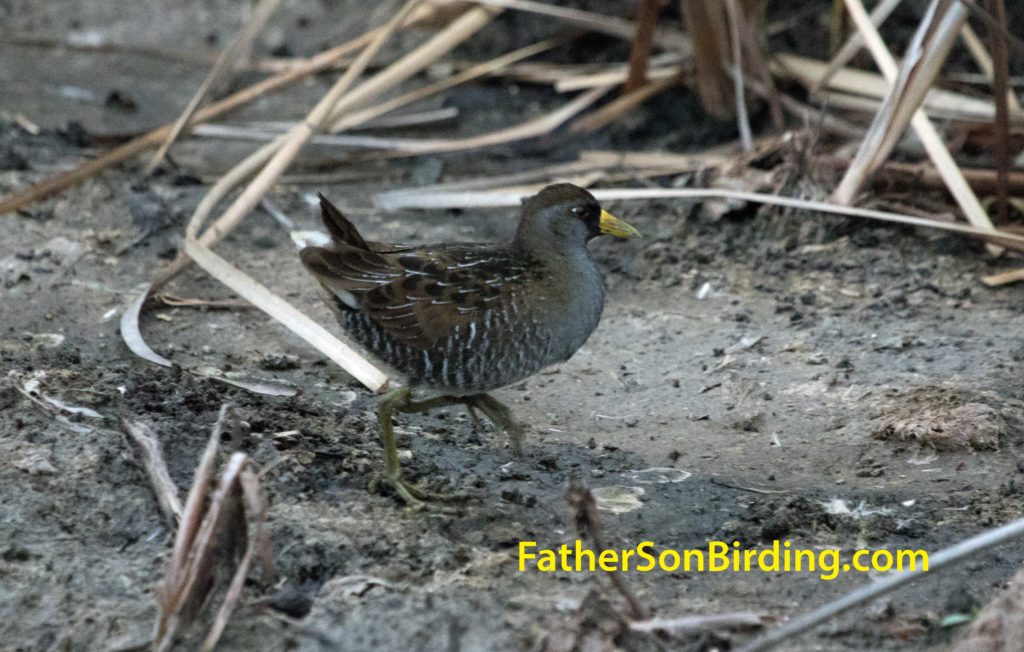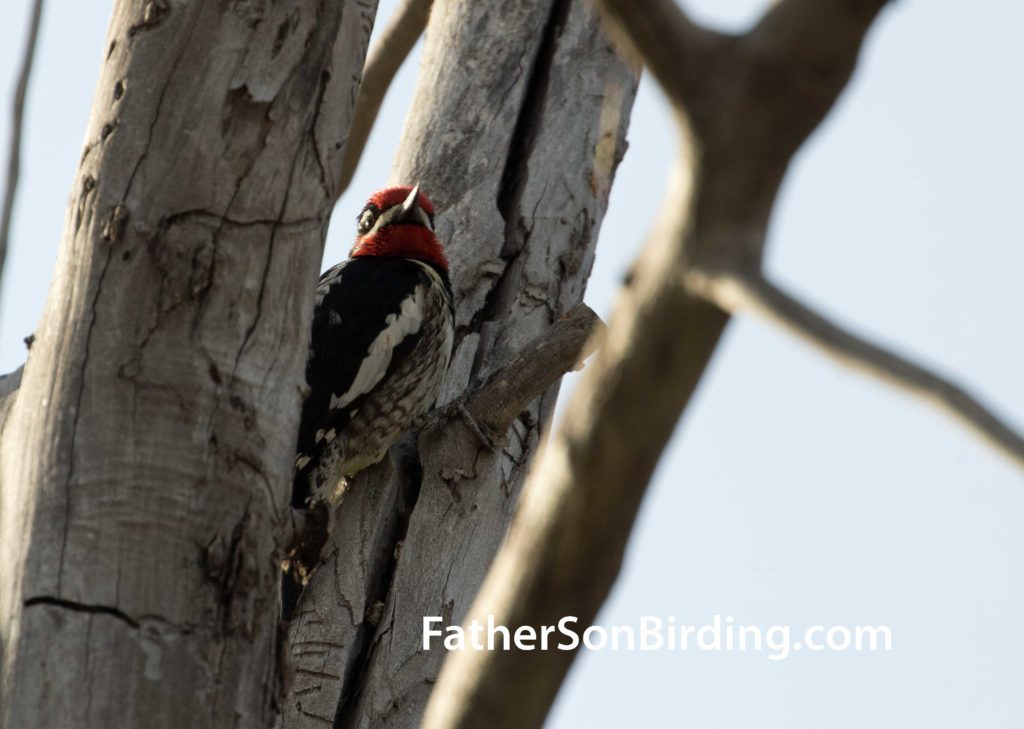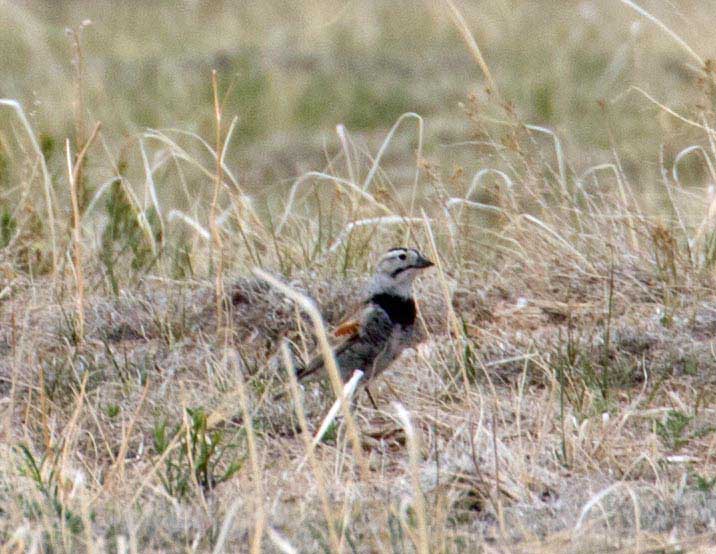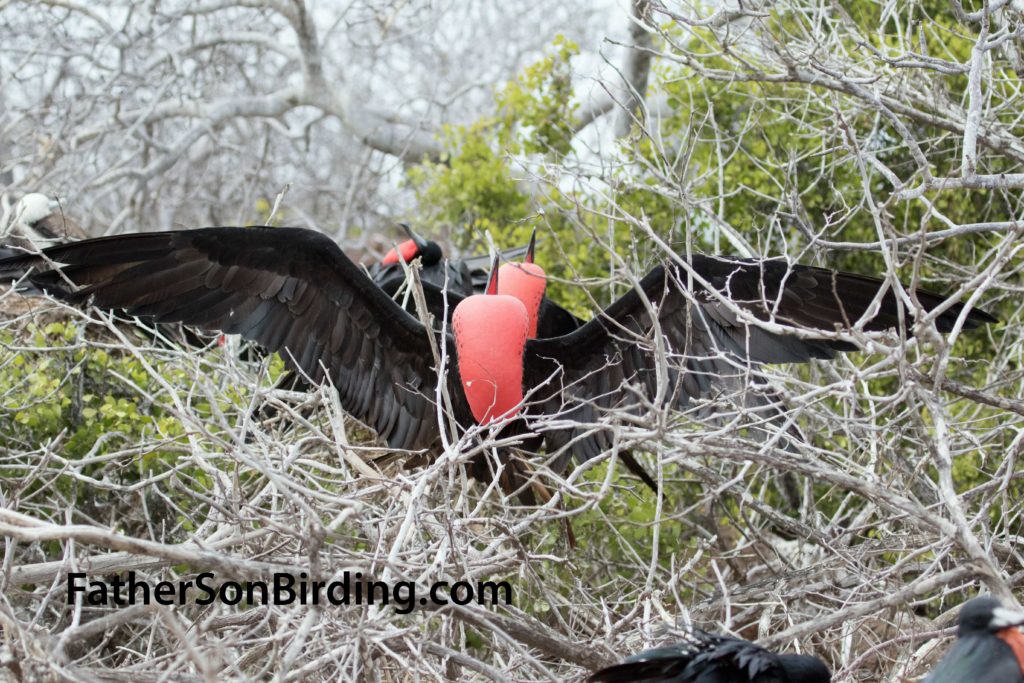
As we watched these male frigate birds ardently advertising for a mate, a female landed next to one of them. Let the family begin! (photo by Sneed B. Collard III)
Almost exactly two years ago, our family was fortunate to visit the Galapagos Islands. Braden and I eagerly anticipated the birds we might see, but weren’t sure what birding might be like in one of the world’s most famous places. Our findings? That while the Galapagos is full of fascinating birds to see, it is one of the world’s best places to think more deeply about birds, their evolution, and behavior.
Upon arriving, the first thing we noticed is how tame Galapagos birds are. Many, after all, evolved with few predators to worry about, and this was clearly demonstrated as we hiked within a few feet of nesting Blue- and Red-footed Boobies, Magnificent Frigatebirds, and a sublime Galapagos Dove. Even Yellow Warblers hopped around our feet seemingly without fear. Just try getting close to one in Montana! This close proximity, of course, was great for photography, but also for watching bird behaviors up-close.

Watching these flightless (Galapagos) cormorants perform their intricate mating dance was one of many unexpected, delightful birding surprises we experienced in the islands. (photo by Sneed B. Collard III)
One time, we stood thirty feet from four or five male frigatebirds sitting in stick nests that they had built. When a female flew over, the males all spread their wings, puffed out their gular pouches, and “rattled” their beaks. It was their way of shouting “Choose me!” It worked too! As we watched, a female landed next to one of the males to begin the “dating” rituals.
The most interesting Galapagos birds were the finches. Perhaps the drabbest, least noticeable birds in the islands, the finches played a key role in helping Charles Darwin tease out the basics of evolution by natural selection. How? When he visited the islands in 1835, he collected many animal specimens—including finches—from the different islands. Back in England, a colleague informed him that the finches actually included many different species. This, along with observations he’d made on Galapagos tortoises and other species, helped Darwin realize how different habitats and conditions can shape animals and create new species.

One Galapagos finch that Darwin missed is the Coke-swilling Finch—a rare species we were lucky enough to see in action! (photo by Sneed B. Collard III)
During our visit to the islands, Braden and I barely got started learning to identify the different finches, but we soon began to distinguish between larger and smaller species. Evolution has especially acted on the birds’ beaks, both in size and shape, as the beaks are a key to what size seeds and other foods the birds can eat. Not surprisingly, the beaks have formed the basis of long-term studies by modern scientists, as documented in one of my favorite books, Jonathan Weiner’s excellent The Beak of the Finch: A Story of Evolution in Our Time. Check it out—and if you ever get a chance to visit the Galapagos, jump on it. It will permanently alter your perspective on birds and life on our amazing planet.

Braden and I never had any doubt about our Bird of the Trip. Every day, Blue-footed Boobies delighted us with their incredible flying and fascinating behaviors! (photo by Sneed B. Collard III)

